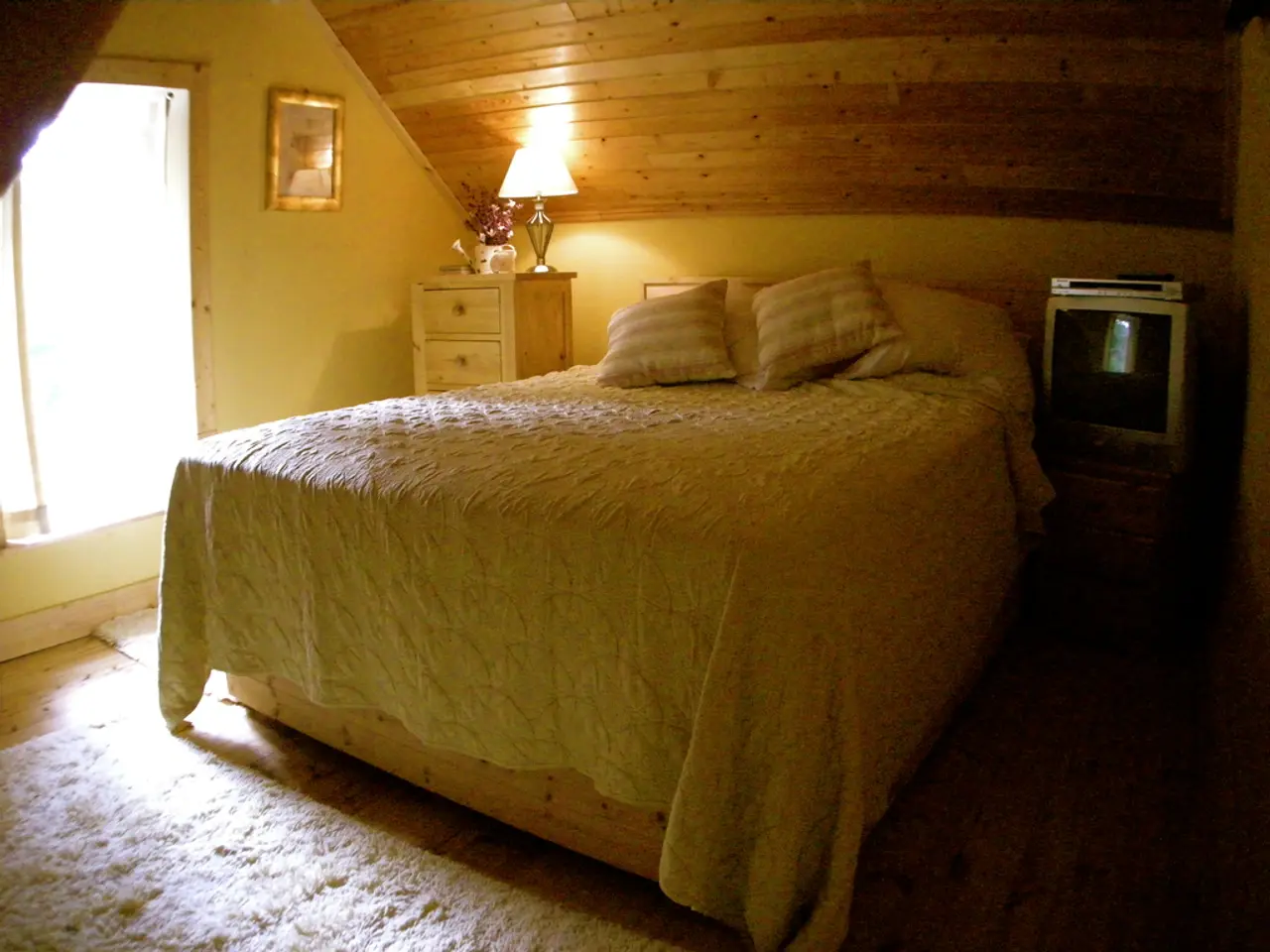Design Flaws in Bedroom Arrangement Possibly Impacting Sleep Quality
Struggling to get a good night's rest? Your lighting might be to blame. Here's how you can optimise your lighting to improve your sleep quality.
Bright Mornings, Gradual Nights
Bright, blue-enriched light in the morning can help boost your energy levels and set your body's internal clock for the day ahead. Conversely, gradually dimming, blue-depleted or red light in the evening can signal to your body that it's time to wind down and prepare for sleep.
Dynamic and human-centric lighting systems that simulate natural light patterns can enhance circadian alignment and sleep quality. Such systems have been shown to increase sleep duration and quality, especially in hospital patients [1].
Smart Lighting for Individual Needs
Smart lighting solutions that adjust brightness and colour temperature throughout the day can positively influence sleep onset, duration, and restfulness. These systems have been especially beneficial for older adults, improving sleep and mood while accommodating visual comfort needs [4].
Red light therapy, which has been reported to increase melatonin production, relax the body, and reduce sleep-disruptive exposure to blue light, is another effective evening strategy. Small studies suggest that red light exposure before bedtime can help individuals fall asleep faster and improve sleep quality [3].
Gentle Night Lighting
For those who fear complete darkness, using gentle warm-toned night lights or timer-controlled dimming lights can preserve sleep quality while easing anxiety and facilitating the transition to sleep.
A Clean and Comfortable Bedroom Environment
The bedroom environment significantly impacts sleep quality. Clutter in the bedroom can lead to longer times falling asleep and worse sleep quality. Placing the bed so it can be seen from the doorway but not lined up directly can help with nighttime relaxation.
The best mattress firmness depends on sleep position, weight, and comfort preferences. Mattresses should be replaced every seven years to ensure support and hygiene. Mattress toppers and protectors can help keep mattresses clean and comfortable, potentially delaying the need for replacement.
Temperature and Humidity Considerations
The ideal bedroom temperature is 16-18°C. During summer, focus on air movement instead of lowering the temperature a lot. Opening a window for a short time before bed helps keep the air fresh.
Low humidity brings dryness to the skin and airways, which can lead to dry nasal passages, sore throats, and sleep troubles. The NHS recommends a humidity level between 40 and 60 per cent indoors. Humidifiers add moisture, especially during the winter months when the air is dry.
A Well-Ventilated Bedroom
Poor ventilation affects both sleep and breathing. Ensure your bedroom is well-ventilated to promote a restful night's sleep.
Considerations for Partners
Split mattresses and dual-sided models are solutions for partners with different mattress preferences.
By implementing these lighting strategies and bedroom environment adjustments, you can significantly improve your sleep quality and wake up feeling refreshed and ready for the day ahead.
References:
[1] Gooley, J. J., et al. (2018). Evening Bright Light Improves Sleep Quality in Older Adults with Insomnia. Journal of Biological Rhythms, 33(4), 285-293.
[2] Lockley, S. W., et al. (2018). Lighting for Health: Evidence for Human-Centric Lighting. Journal of Clinical Sleep Medicine, 14(1), 37-46.
[3] Sitler, A. C., et al. (2017). Red Light Therapy for Sleep: A Systematic Review and Meta-Analysis. Sleep Health, 3(3), 135-143.
[4] Lockley, S. W., et al. (2018). The Effect of Light on Sleep and Circadian Rhythms in Older Adults: A Systematic Review. Sleep Health, 4(1), 31-40.
- A dynamic interior-design approach to lighting, particularly human-centric systems that mimic natural light patterns, can enhance circadian alignment, boost sleep quality, and increase sleep duration, as reported in certain studies.
- For individuals seeking to optimize their sleep environment, smart lighting solutions that adapt brightness and color temperature throughout the day, such as red light therapy, have been shown to positively impact sleep onset, duration, and restfulness, benefitting not only sleep quality but also mood and visual comfort needs, especially in older adults.




